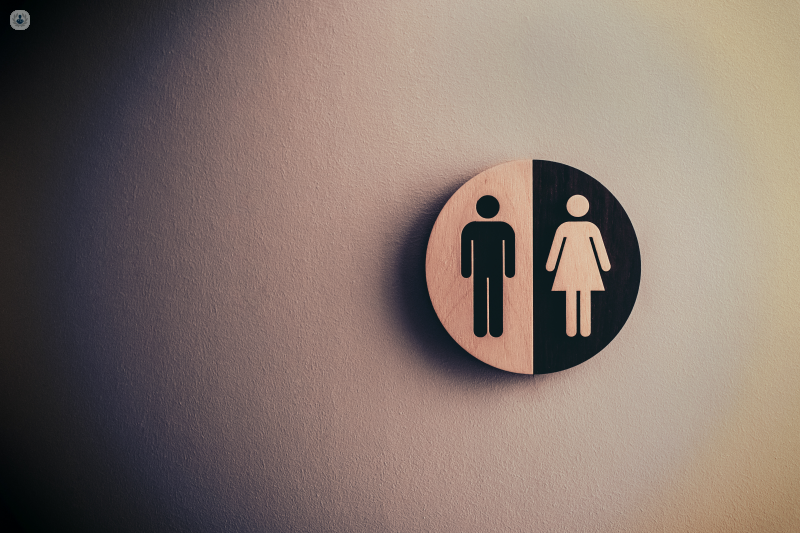What are the potential complications of untreated urinary incontinence?
Escrito por:In one of our latest medical articles here below, extremely well-regarded consultant gynaecologist, Mr Angus J.M. Thomson, details the different types of urinary incontinence before going on to reveal the diagnostic process and treatment options for patients experiening urinary incontinence.

What is urinary incontinence, and what are the different types of urinary incontinence?
Urinary incontinence is basically the involuntary loss or leakage of urine. The two main types of incontinence are stress incontinence and urge incontinence. Stress incontinence is incontinence caused by any increased pressure on the bladder. Urge incontinence is where there is an involuntary contraction of the bladder muscle.
The final type of incontinence is overflow incontinence. This is caused because you can’t empty your bladder properly. Due to this, urinary retention occurs.
What are the most common causes of urinary incontinence, and who is most at risk?
The different types of incontinence have different causes. The main cause of stress incontinence is childbirth. Other causes include intense exercise.
Urge incontinence has many factors that contribute to it. The main ones include:
- Family history
- Age
- Childbirth
- Menopause
- Recurrent urinary infections
How is urinary incontinence diagnosed, and what are the available treatment options?
Diagnosis includes listening thoroughly to how the patients describe their symptoms. In terms of investigations, we carry out a number of bladder tests, including filling in a bladder diary.
The other test is a flow test, where the patient urinates into a special toilet. We can then see how quickly the urine comes out, how much urine comes out, and what the flow rate is like. We can also measure how much urine is left behind in the bladder, which tells us how well you are emptying the bladder.
We also use a catheter used (inserted into the bladder). This test can show us all we need to know about bladder pressure. The main treatment options include lifestyle changes, conservative measures, medical treatments, and surgical treatments. For stress incontinence, modifying your diet and doing pelvic floor exercises can really help.
Physiotherapy is also highly beneficial. Vaginal pessaries can also be beneficial to some patients. For urge incontinence, lifestyle modifications are also highly effective.
Being careful about what you are drinking is very important for patients suffering from urge incontinence. Patients should avoid caffeine and fizzy drinks. Pelvic floor exercises, again, really help patients with urge incontinence. Botox treatment can also be an effective treatment option.
What are the potential complications of untreated urinary incontinence, and how can they be prevented?
Bladder issues really centre more on quality of life instead of potentially fatal complications. Thus, patients suffering from urinary incontinence should focus on lifestyle modifications.
Occasionally, urinary incontinence can sometimes be related to recurrent urinary tract infections, which can have a negative impact on kidney function.
To book a consultation slot with Mr Angus J.M. Thomson, just head on over to his Top Doctors profile today.


